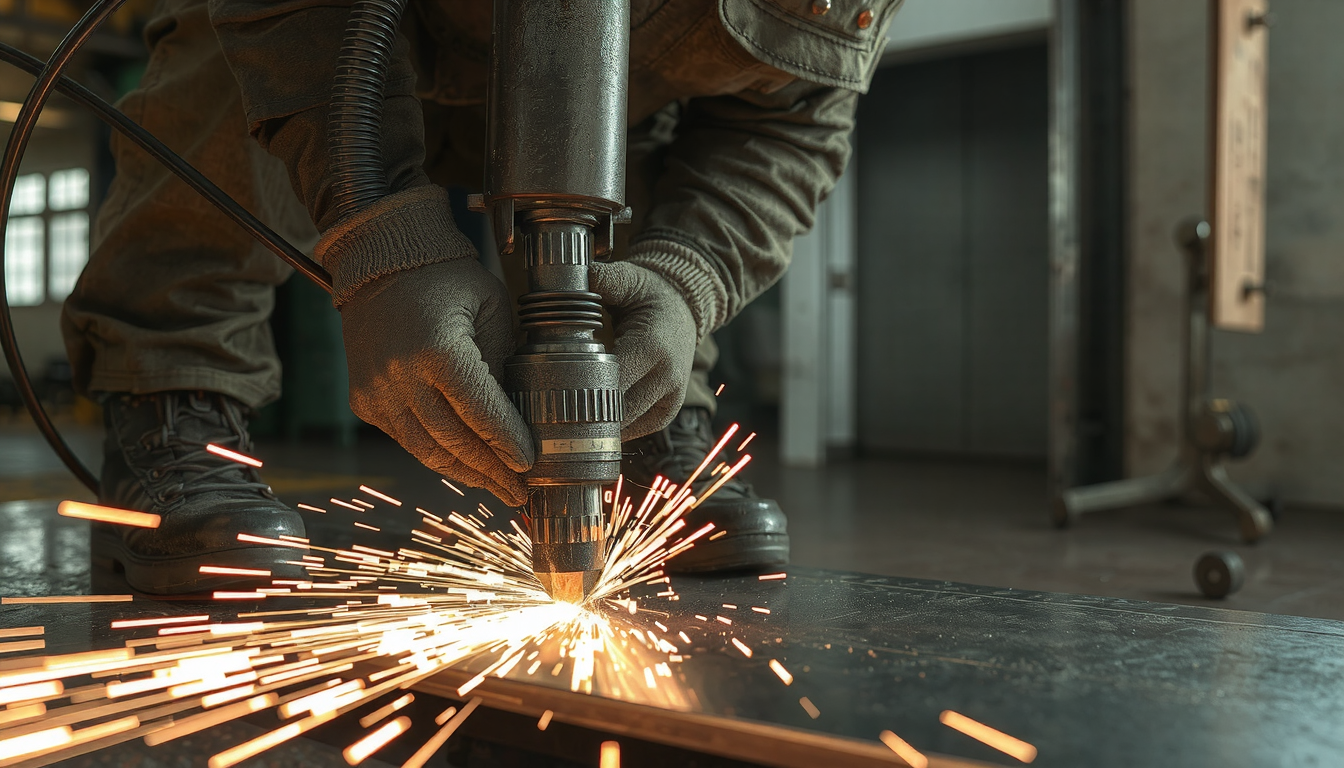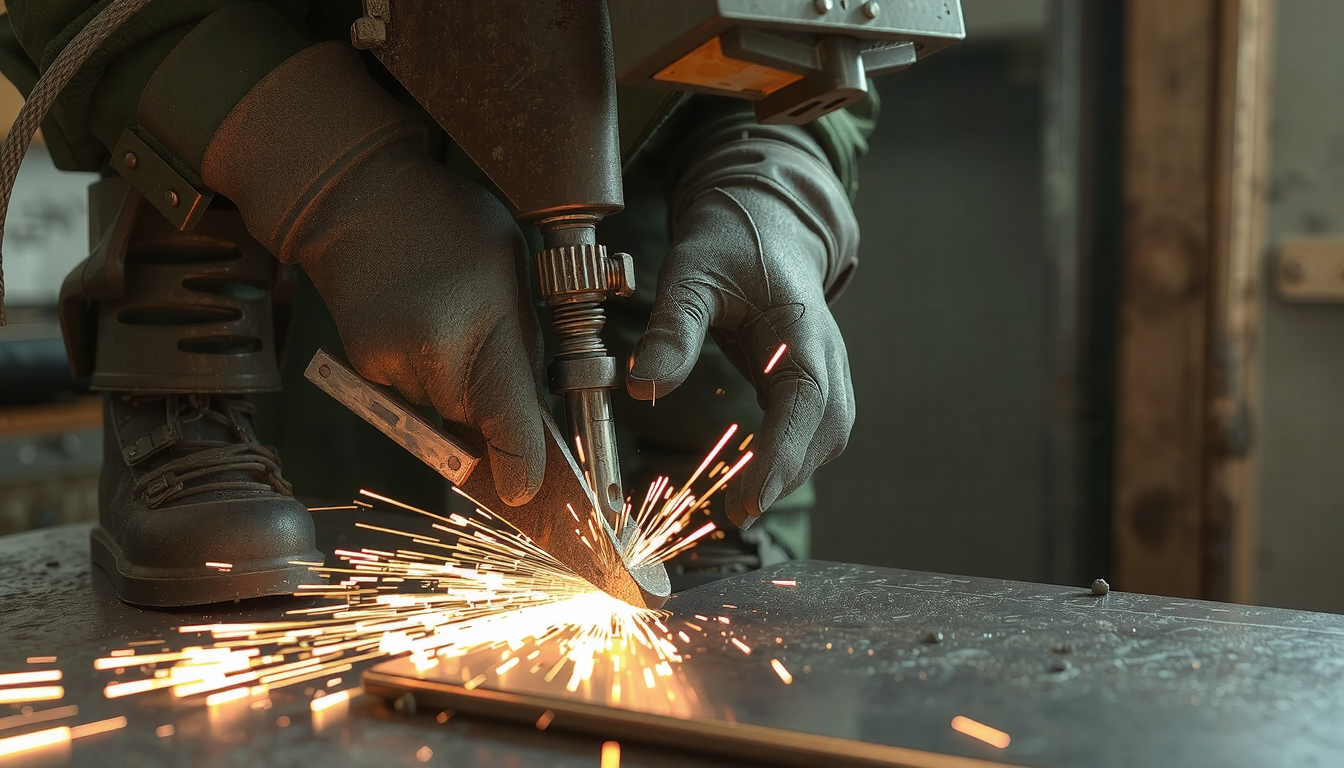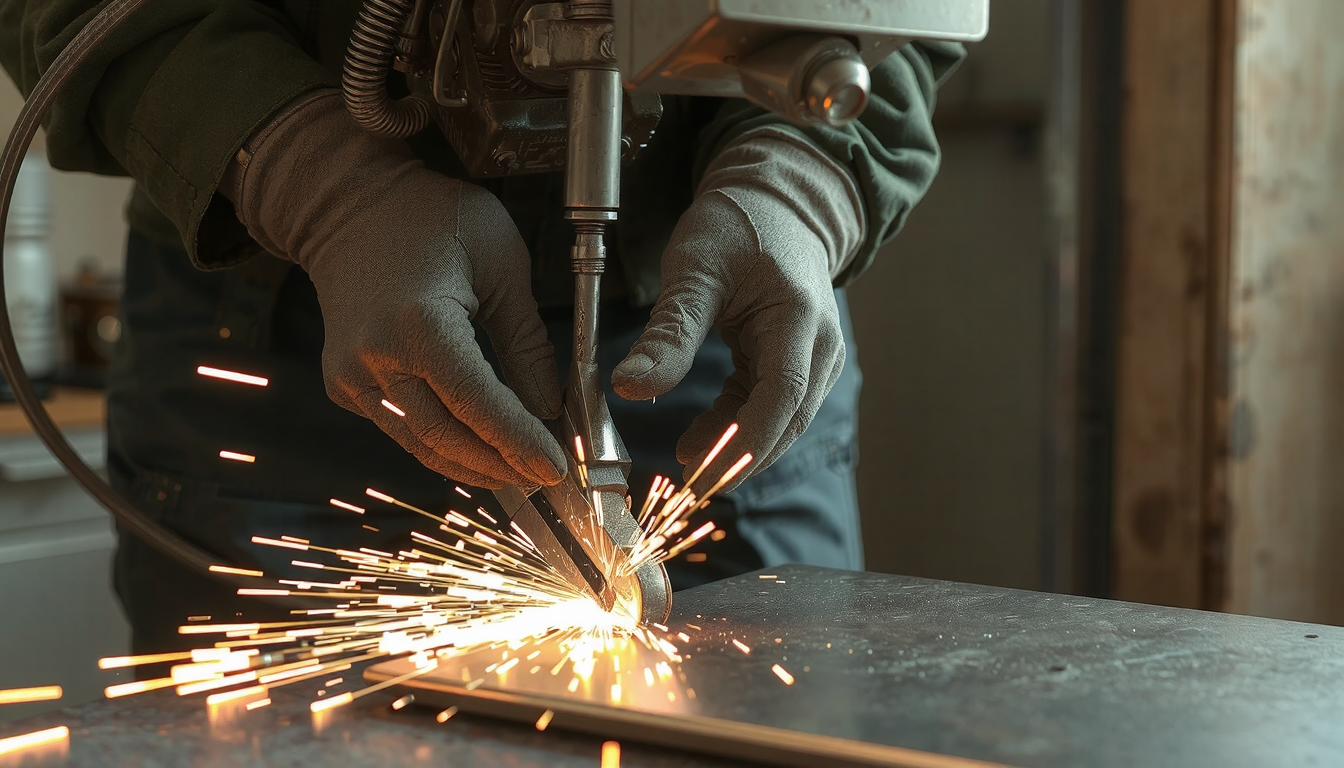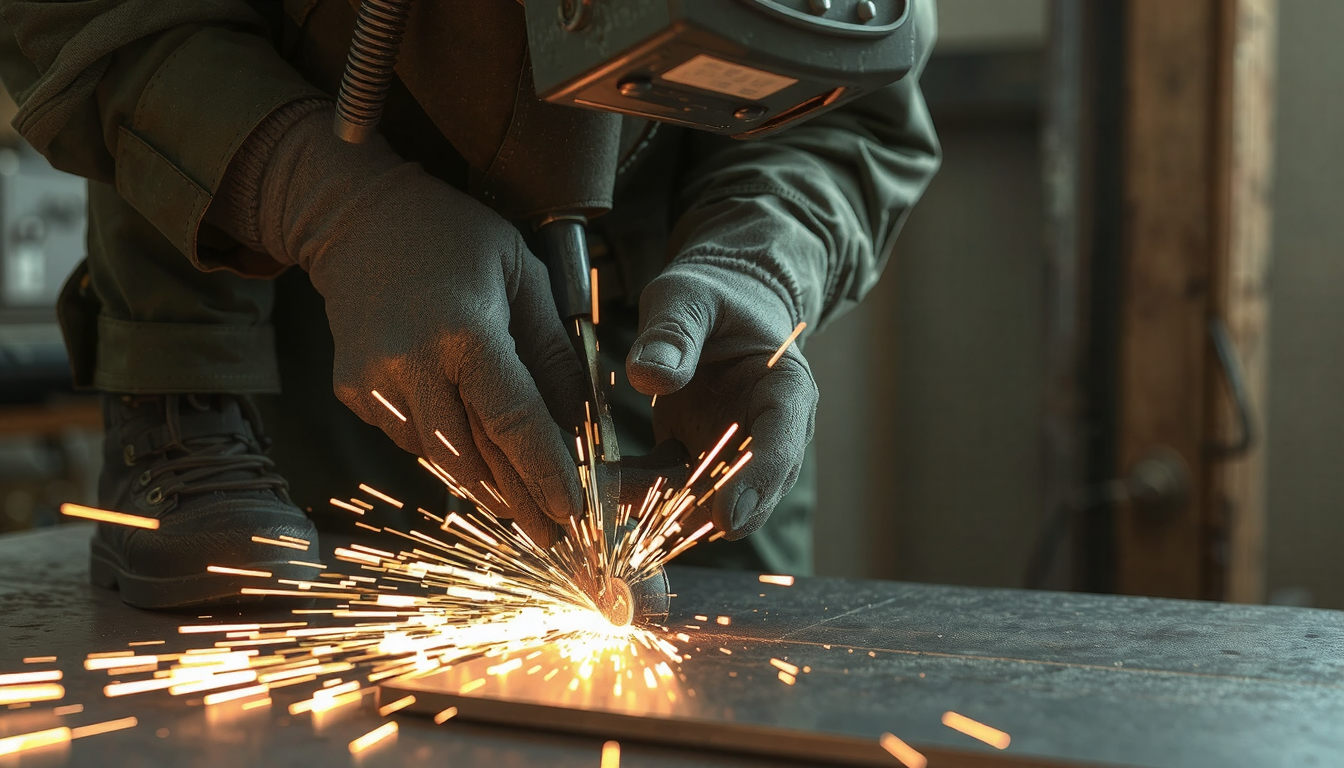Whether you’re a DIY enthusiast or an artist, mastering the art of cutting copper sheet metal is essential. With good equipment and a few helpful tips, you can achieve smooth and precise cuts for your projects. The best way is determined by two main elements: the thickness of the copper and the kind of cut you need. A craft project that uses a thin sheet requires a different technique than a thick one designed for a countertop.

This guide will be your companion in this learning journey. We will go through basic safety precautions that need to be taken, how to choose the right tool, and step-by-step instructions on different cutting methods. We will also demonstrate how to get a perfect edge on your cut surfaces.
Safety First: Basic Safety Steps for Working with Copper
Before we make the first cut, safety is our top goal. Copper dust can be harmful if you breathe it in. The cut edges of the metal are very sharp. Following these rules will protect you from injury and make sure your project goes well.
Personal Safety Gear is a Must
Always wear the right safety gear. There are no exceptions to this rule. It is the most important step in learning how to cut copper sheet metal safely.
Must-Have Safety Gear List:
* Safety Glasses: Protect your eyes from tiny metal pieces that can fly off during cutting.
* Guantes: Wear thick leather or Kevlar gloves. They will protect your hands from razor-sharp edges and burrs.
* Hearing Protection: Use earplugs or earmuffs when using loud power tools like saws or grinders.
* Dust Mask: A good dust mask is needed to stop you from breathing in fine copper dust.
Seguridad en el lugar de trabajo
Your work area should be clean, stable, and well-aired. A work area is safe only if it is clear and organized.
- Secure the Workpiece: Do not hold copper sheets with your hands while you are using power tools. Always clamp them securely to a workbench. This will prevent the tool from grabbing the metal, which can cause an accident.
- Fresh Air: Always work in a well-ventilated area such as a garage with the door open or in a shutdown fitted with a fan. This helps disperse the dust and any other gases.
- Clear Workspace: Ensure your area is free from clutter. Sparks from metal could potentially start a fire, so remove any materials that may burn before you begin.
Knowing Your Material: Basics about Copper Sheet
In order to cut copper skilfully, it is helpful to familiarize yourself with the way it works. Copper is a unique material with different characteristics than steel or aluminum. This knowledge will help you select the best tool and method.
Copper’s Distinctive Characteristics

Copper is one of the softest and most ductile of metals. Thus, it is pliable and can shape easily. However, this softness can also make it a little “sticky” while cutting. Compressing the saw teeth, it can tear it or clog it instead of a clean cut. Hence, a slow, even cutting speed is the best way to go about it.
Copper Sheet Measurement (Gauge)
Copper sheets are measured in gauges. A higher gauge number means thinner the sheet. For example, 30 gauge copper sheet is as thin as copy paper, while 16-gauge is a durable sheet, requiring more power to be cut. Knowledge of the gauge can assist you in using a suitable tool for the cut.
| Copper Gauge | Grosor (pulgadas) | Thickness (Millimeters) | Usos comunes |
|---|---|---|---|
| 30-gauge | 0.010″ | 0.25 mm | Embossing, very delicate crafts |
| 24-gauge | 0.020″ | 0.51 mm | Jewelry, light crafts, decorative accents |
| 22-gauge | 0.025″ | 0.64 mm | Backsplashes, small panels, robust jewelry |
| 18-gauge | 0.040″ | 1.02 mm | Small tabletops, range hoods, paneling |
| 16-gauge | 0.051″ | 1.29 mm | Countertops, bar tops, durable surfaces |
Picking Your Tool: A Guide to the Best Tools for Cutting Copper
The best tool for cutting copper sheet metal very much depends on your project. There are three main factors to consider: the thickness of the metal, the type of cut you want (straight, curved, or complex), and the size of your project. A table below shows different tools and their recommendations.
Copper Cutting Tool Selection Chart
| Tool Name | Lo mejor para | Pros | Cons |
|---|---|---|---|
| Tin Snips | Thin sheets (up to 22-gauge); straight & gentle curves | Low cost, easy to use, portable | Can bend edges, not for thick metal or tight curves |
| Jeweler’s Saw | Thin sheets (up to 18-gauge); detailed, tight curves | Very precise for complex shapes | Slow, blades break easily, needs practice |
| Bench Shear | Sheets up to 16-gauge; long, straight cuts | Very fast, clean, and straight cuts | Large, costly, not for curves |
| Jigsaw | Medium sheets (up to 16-gauge); straight & curved cuts | Flexible, good for curves, common tool | Can shake and tear thin metal if not supported |
| Bandsaw | All thicknesses; straight, curved, and fast cuts | Fast and clean cuts, very flexible | Needs space, can be scary for beginners |
| Angle Grinder | Thicker sheets (18-gauge+); rough straight cuts | Very fast for thick metal | Loud, messy (sparks), not exact |
| Cortadora de plasma | All thicknesses; any shape | Very fast, cuts any shape | Very costly, needs air compressor |
A Note on Blades
When using a power saw like a jigsaw or bandsaw, the blade is key. Always use a blade made for cutting non-iron metals. These blades have many small teeth (a high TPI, or teeth-per-inch). A fine-toothed blade will give you a smooth finish and stop the blade from grabbing and tearing the soft copper. As noted in discussions among woodworkers who frequently cut non-ferrous metals, using the wrong blade is a common cause of poor results.
How to Cut Copper Sheet Metal with Hand Tools (For Thin Sheets & Detailed Designs)
The majority of DIY projects can be completed with just hand tools alone. They are very manageable and very suitable for thinner copper sheets commonly used in crafts and jewelry. Once you master how to cut copper sheet metal with hand tools, it will be easy for you.
Method 1: Using Tin Snips for Straight and Curved Cuts (up to 22-gauge)

Tin snips, a.k.a. aviation snips, are just like very strong scissors for metal. They cut best on very thin material like foil.
- Mark your cutting line prominently on the copper sheet using a fine-tip marker.
- Place the snips at the very edge of the copper sheet. Open the jaw widely and let them rest on the line.
- Cut using short, controlled squeezes of the hands. Avoided closing the blades wholly at the end of each snip, as this will create a small notch.
- Handle curves by making a series of very small, straight cuts into the line (inside the curve) rather than trying to make a single continuous line.
A common mistake that usually happens is that people try to force a long single cut. Most of the time this will cause bending and warping of the edges of the copper. It’s far better to cut it into smaller parts. For a very neat finish cut, leave about 1/16 of an inch to the cut line, and then file the edge right down to the line.
Method 2: Using a Jeweler’s Saw for Detailed Patterns
When your goal is detailed patterns, nothing beats a jeweler’s saw. It is the best choice for beginners learning how to cut copper sheet metal for jewelry projects.
- Place the blade inside the frame, so that the teeth are facing outwards and pointing down.
- Oil the blade with a bit of beeswax or a special blade oil. This helps it glide through the metal with ease.
- Ayuda the copper sheet on a bench pin, which is a V-shaped piece of wood that clamps to your table.
- Cut with a steady, up-and-down motion. Allow the tool to do the work, keep your wrist and arm relaxed, and do not push the saw forward, just guide the blade beside your line.
This method requires perseverance but is the most precise. To learn more about this, many jewelers rely on guides that cover techniques for cutting and forming copper for jewelry.
How to Cut Copper Sheet Metal with Power Tools (For Thicker Sheets)
When you are dealing with thick copper sheets or making more extended cuts, power tools help you avoid a lot of time and effort. A jigsaw or a bandsaw can give outstanding results when used correctly.
Using a Jigsaw or Bandsaw for Clean, Fast Cuts
The secret to cutting copper using a power saw is to support the metal properly. This minimizes the vibration that causes tearing and rough edges.
- Choose a suitable blade. Pick a fine-toothed blade made for cutting non-iron metals. Search for blades with 20-24 TPI for the jigsaw.
- Sandwich the metal. This is the most critical step. Place the copper sheet between two thin pieces of plywood or MDF.
- Clamp the sandwich firmly to your workbench, so it stays put.
- Mark your cut line on the top piece of wood.
- Cut slowly and steadily through the entire assembly. Be careful and don’t force your saw.
You can judge the correct speed by the sound. A good cut sounds smooth and steady. If there’s a chattering or grabbing noise, you’re moving too fast. Slow down your feed rate and let the blade work at its own pace. The “sandwich” method is the key to obtaining a professional quality cut on copper sheets using power tools.

Achieving a Flawless Edge: How to Remove Burrs and Smooth Your Cut Edges
Regardless of the cutting method used, the edge of the copper sheet will inevitably be sharp and will also have defect burrs. The burrs must be removed, with both safety and good appearance being the reasons.
The Process of Removing Burr
Edge finishing is not complicated; it actually is just a procedure with several steps.
- First, use a flat metal file or a special burr removal tool. Hold it at a slight angle and run it along the edge to knock off the large burrs.
- Next, switch to sandpaper to smooth the edge. Start with a medium grit (like 220) and work your way up to finer grits (400, then 600). Wrap the sandpaper around a small block of wood to keep the edge flat.
- For added polish, a final touch with #0000 steel wool or a polishing compound on a buffing wheel will do. This will give you bright, smooth, and even edges that correspond to the sheet’s surface.
Resolving Common Problems of Copper Cutting
Despite the wonderful preparations made, you may still encounter problems. Here are some of the solutions you can resort to when learning how to cut copper sheet metal.
-
Problem: My cut edges are jagged and torn.
- Solution: You are probably cutting too fast or using a blade that is too coarse. If you’re using a power saw, substitute it with a blade with more teeth per inch (TPI) and decelerate the feed rate. If you’re using snips, it would be better to make smaller, more controlled cuts. Don’t forget to clamp down the sheet well.
-
Problem: The copper sheet is bending or warping near the cut.
- Solution: The metal is not appropriately supported. If using the saw, then the “sandwich” method, mentioned before, should be used by clamping the copper between two pieces of wood. If the tool is tin snips, it seems that you are pushing it too hard. Work with the tips of the blades and make smaller snips to reduce the stress on the metal.
-
Problem: My jeweler’s saw blade keeps breaking.
- Solution: Blade breakage is almost always caused by two things: too much forward pressure or twisting the blade in the cut. Remember to use a light touch and a straight, vertical sawing motion. Let the teeth do the cutting. Also, make sure the blade has good tension in the frame—it should make a high “ping” sound when plucked.
When to Call the Pros: Professional Sheet Metal Work
While many projects are perfect for DIY, some jobs are better left to professionals. If your project needs perfect accuracy on thick material, involves very large sheets, or needs many identical parts, a professional service is often the best choice.
For projects needing high precision, detailed shapes in thick material, or large amounts, consider using professional fabricación de chapa metálica services. Companies like Mekalite use advanced equipment like CNC plasma cutters and water jets to deliver perfect results that are difficult to achieve at home. For more complex parts that may need turning or shaping beyond simple cutting, Servicios de torneado CNC offer another dimension of professional manufacturing.
FAQ: Your Copper Cutting Questions Answered
Can I use woodworking tools to cut copper sheet metal?
Yes, many woodworking tools like bandsaws and jigsaws can cut copper, provided you use the correct blade (fine-toothed, metal-cutting) and method. The “sandwich” method, where the copper is supported between two pieces of wood, is highly recommended to prevent tearing and ensure a clean cut.
What is the easiest way to cut thin copper sheets for crafts?
For thin copper sheets (24-gauge and thinner), the easiest and most accessible tools are aviation snips or heavy-duty shears. They work like scissors and allow for quick straight or curved cuts. For very detailed designs, a jeweler’s saw is the best choice.
How do I cut a perfect circle out of a copper sheet?
For small, perfect circles common in jewelry, a disc cutter is the ideal tool. It works like a hole punch for metal. For larger circles, you can use a jigsaw or jeweler’s saw, carefully following a drawn line. Using a circle-cutting jig with a power tool can also provide great results.
Do I need to anneal (soften) copper before cutting it?
Annealing, which is the process of heating and cooling metal to soften it, is generally not needed for cutting with saws or snips. However, it can be helpful if you are using a disc cutter or punches, as it makes the metal easier to shear without cracking.
How do I prevent the copper from tarnishing after I cut it?
After cutting and finishing the edges, clean the piece thoroughly to remove oils and debris from your hands. You can then apply a clear lacquer spray designed for metal or a special microcrystalline wax like Renaissance Wax. This will seal the surface and protect it from air, which causes oxidation and tarnishing.

